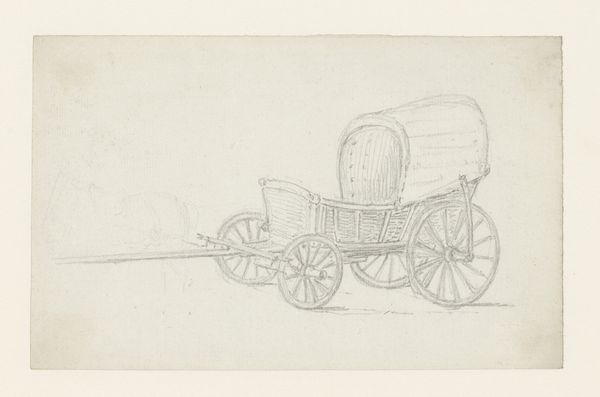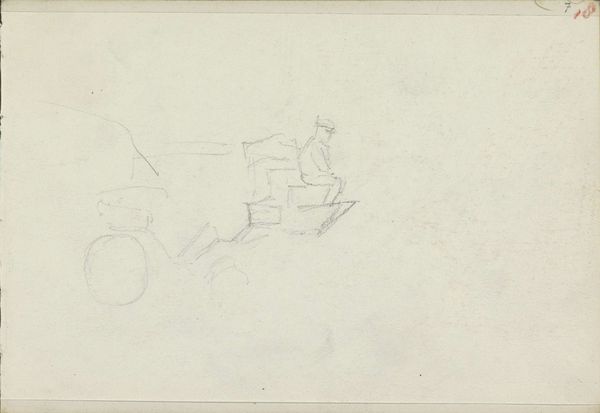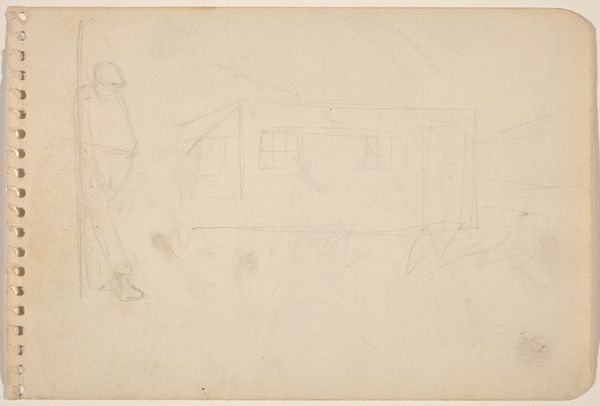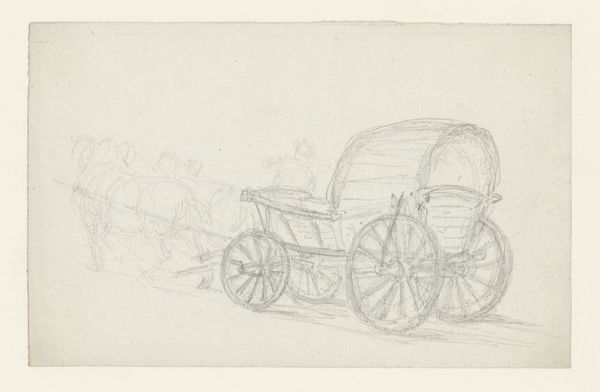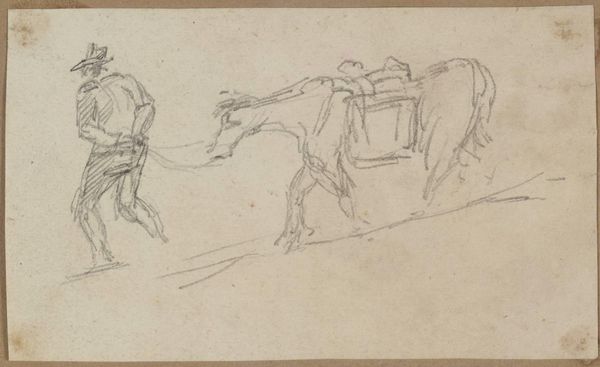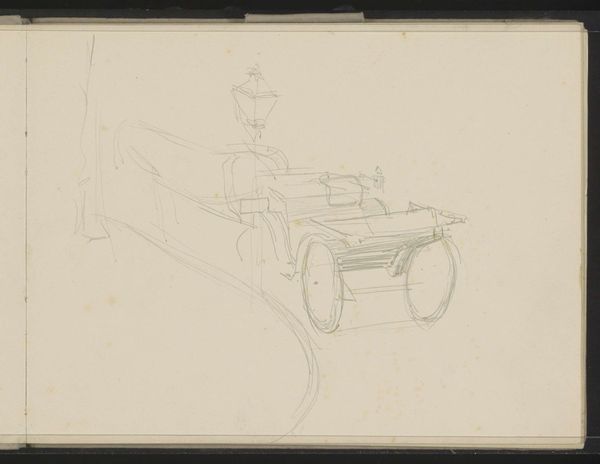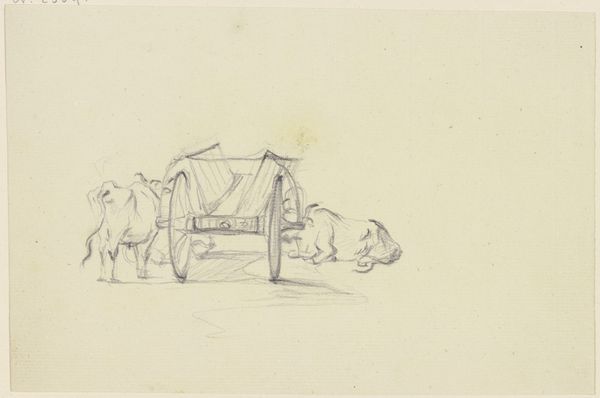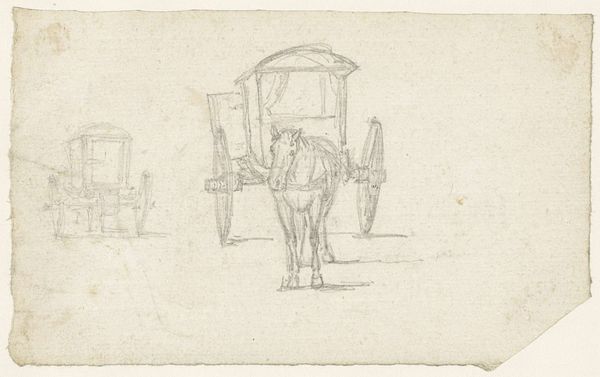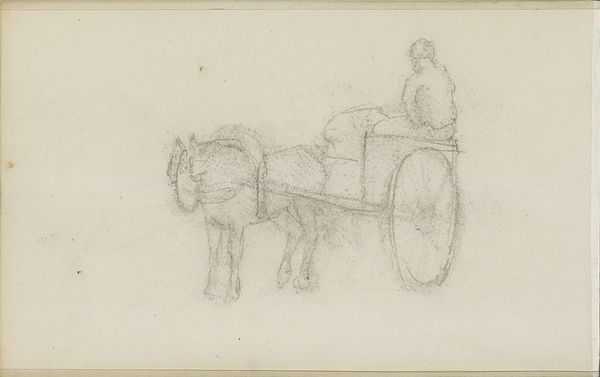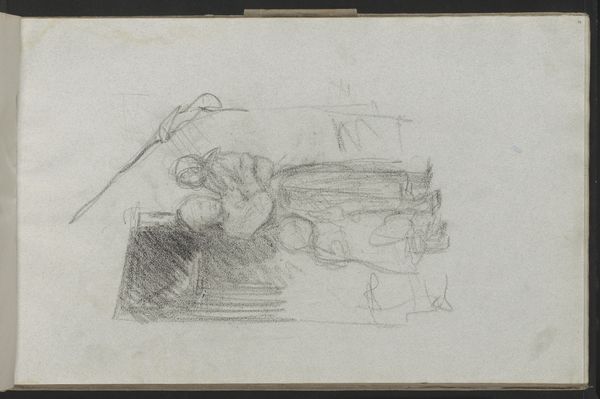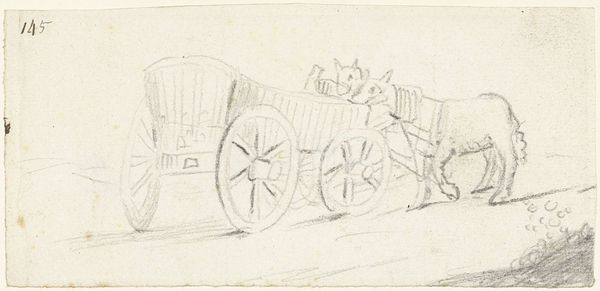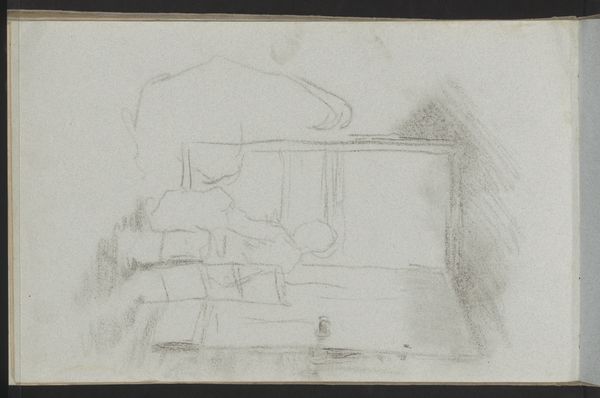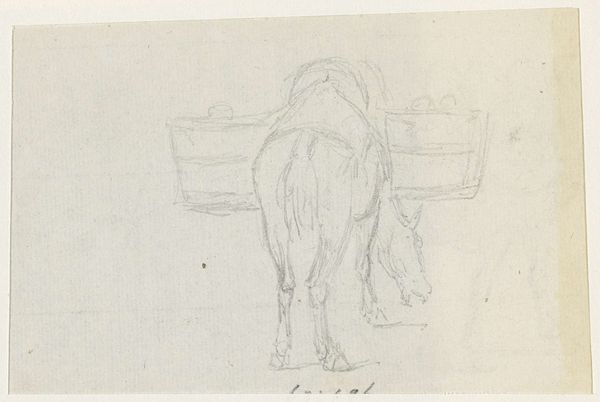
#
toned paper
#
light pencil work
#
ink paper printed
#
pencil sketch
#
personal sketchbook
#
idea generation sketch
#
ink drawing experimentation
#
pen-ink sketch
#
horse
#
sketchbook drawing
#
sketchbook art
Copyright: Rijks Museum: Open Domain
Editor: Here we have Breitner's "Paard-en-wagen" from between 1886 and 1923. It's a delicate pencil sketch on toned paper, currently residing in the Rijksmuseum. There's a real sense of transience captured here, a fleeting moment. What can you tell me about this work, looking at it through a materialist lens? Curator: What interests me is how Breitner utilizes the immediacy of sketching—the quick marks of pencil on paper—to capture a subject that speaks to the working class, specifically those involved in transit. The sketch itself becomes a tool, a record of the rapid industrial and social changes impacting the labour force. How does the disposable nature of the toned paper, compared to canvas, for instance, shift your understanding of it? Editor: That's interesting. It almost feels like the ephemerality of the material reflects the temporary nature of labour. Breitner is reducing a grand subject to something...ordinary. Curator: Exactly. The sketch doesn't monumentalize, but documents. Think of the graphite sourced for his pencils, and paper pulp, what was that labour like? Where were the social and economic constraints of materials, and what can they suggest? The roughness implies immediacy; this isn't about idealized beauty, but lived experience of industrializing Amsterdam and the impact of industrializing labor on working horses as beast of burden and workers on the street, and how that production is captured. Editor: So by looking at the materials, we start to see the broader network of labor and production tied to a single image of a horse and cart. Curator: Precisely. Even Breitner's own labour in creating this image within a studio must be considered. His social status as an artist gave him access to materials and a perspective distinctly separate from that of the workers he depicts. It reveals the separation between making art and making a living. Editor: I never considered the paper and pencil in that way before. It's fascinating how they, too, become part of the story. Curator: It changes how we appreciate and think about the context surrounding the creation of an artwork. By examining these elements, we acknowledge their active role in shaping our understanding.
Comments
No comments
Be the first to comment and join the conversation on the ultimate creative platform.
